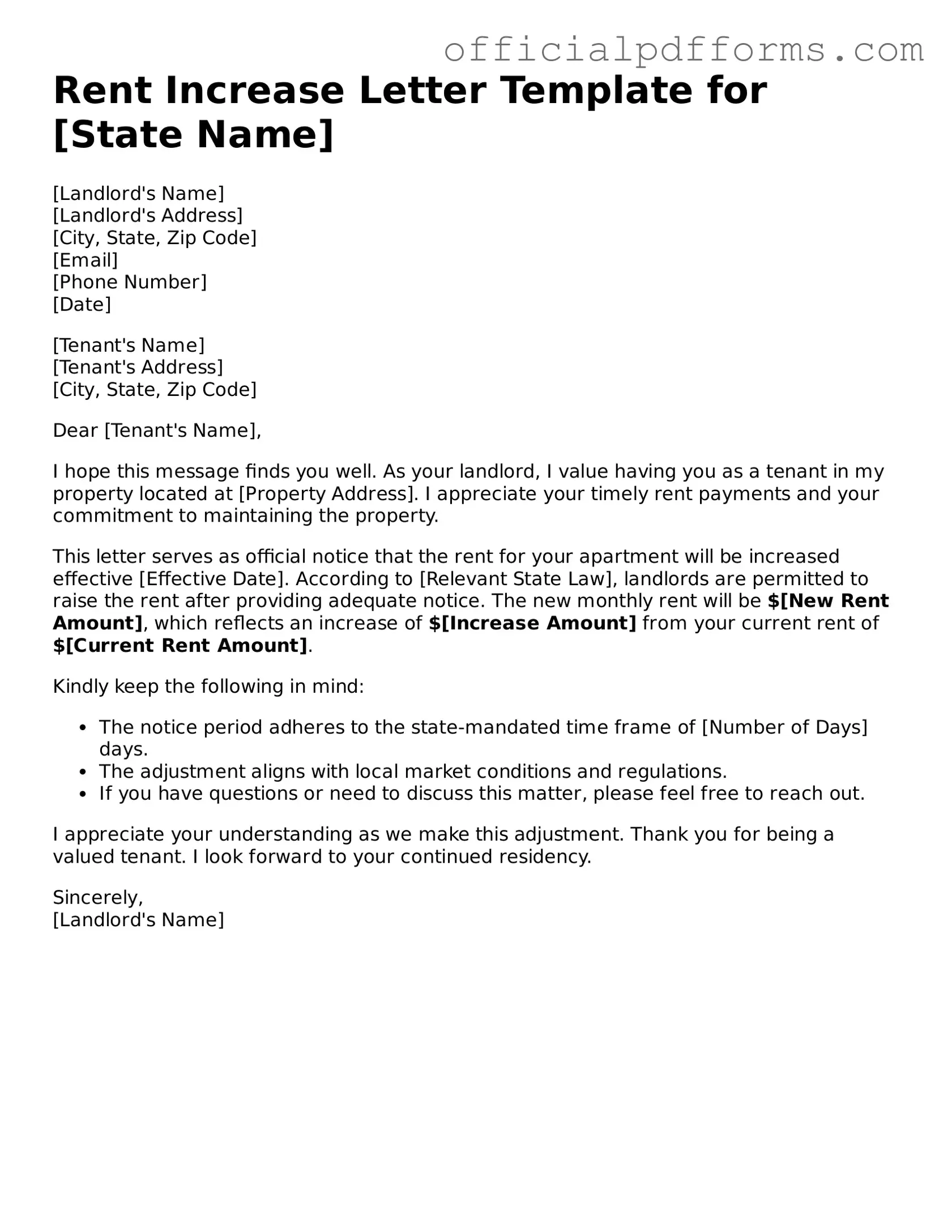Valid Rent Increase Letter Document
A Rent Increase Letter is a formal notice that landlords use to inform tenants about upcoming changes in rent. This document outlines the new rental amount and the effective date, ensuring transparency and compliance with local laws. For landlords and property managers, filling out this form accurately is essential for maintaining a good relationship with tenants.
Take the next step and fill out the Rent Increase Letter form by clicking the button below.
Access Form Online
